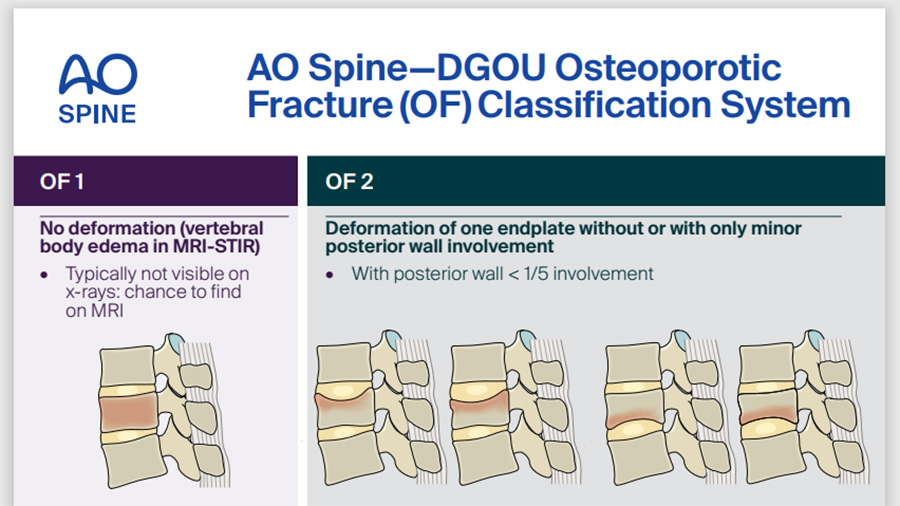Early vs delayed surgery for cervical spine injury in elderly patients: Rethinking timing and outcomes
A STUDY BY DRS NAOKI SEGI, HIROAKI NAKASHIMA, SADAYUKI ITO et al.

As the global population ages, traumatic cervical spinal injuries (CSI) among elderly individuals are becoming a common challenge in spine surgery. This growing demographic brings with it unique concerns—frailty, comorbidities, and variable functional baselines—that complicate decision-making. At the heart of this dilemma is a key clinical question: Does early surgery improve outcomes in elderly patients with CSI, or is a more cautious, delayed approach safer and equally effective?
A major nationwide multicenter study from Japan offers new insight—and the findings resonate beyond its national context. With a well-designed, matched cohort and 462 elderly surgical patients, the study provides a window into the real-world risks and benefits of early vs. delayed surgery in this growing and fragile population.
-
Read the quick summary:
- Early surgery for cervical spinal injury in elderly patients is safe and does not increase perioperative complications.
- Neurological and walking outcomes after cervical spine surgery are similar whether done early or delayed.
- Surgical timing in geriatric cervical spine injury should depend on comorbidities, injury type, and patient condition—not just the 24-hour window.
Disclaimer: The article represents the opinion of individual authors exclusively and not necessarily the opinion of AO or its clinical specialties.
This article refers to the Global Spine Journal Best Paper Award winner: Segi N, Nakashima H, Ito S, et al. Early Versus Delayed Surgery for Elderly Traumatic Cervical Spinal Injury: A Nationwide Multicenter Study in Japan. Global Spine Journal. 2024;15(2):1143-1154. Authors will receive the award at the Global Spine Congress 2025 ceremony in Rio de Janeiro.
Comparing early versus delayed cervical spine surgery in older adults
This retrospective analysis involved patients aged ≥65 with traumatic cervical spinal cord injury who underwent surgical treatment. Patients were categorized into two groups: early surgery (within 24 hours) and delayed surgery (after 24 hours but within one month). After excluding those with AIS grade E and other non-qualifying cases, 462 patients were included—65 in the early group and 397 in the delayed group.
To address baseline differences (early surgery patients were generally more severely injured), the study used propensity score matching, yielding two well-matched cohorts of 63 patients each.
Key findings:
- Complication rates were statistically similar (early: 46%, delayed: 62%; p = 0.074).
- Neurological improvement and ambulation at 6 months showed no significant difference between the two groups.
- Mortality and serious adverse events were not increased by early surgery.
Why timing matters in elderly cervical spine injury treatment worldwide
“Time is spine” has become an accepted mantra in trauma care, promoting decompression within 24 hours as the gold standard. But this concept largely stems from studies focused on younger patients. In elderly patients, where frailty, polypharmacy (especially anticoagulants), and medical complexity are common, such guidelines must be revisited.
This study highlights a critical truth for global spine surgery: early surgical intervention in the elderly is not inherently harmful—and in selected patients, it is both feasible and safe. But it also reveals that early surgery may not always translate into improved functional or neurological outcomes, challenging the idea that faster is always better in this population.
Safety and outcomes of early cervical spine surgery in elderly patients
1. Early surgery in elderly spine trauma patients is safe and feasible
Despite initial assumptions that early surgery might elevate perioperative risks in elderly patients, the study found no significant increase in complications, including intraoperative issues, respiratory failure, and mortality.
The early surgery group had slightly higher blood loss but similar transfusion rates. This debunks the idea that elderly patients must be stabilized for days before surgery and supports the practicality of early decompression, even in frail individuals.
2. Early cervical spine surgery does not guarantee better neurological recovery in elderly patients
While early surgery may benefit younger patients with incomplete spinal cord injuries, this was not observed in the elderly cohort. In matched groups:
- AIS grade conversion at 6 months was comparable.
- Ambulatory status at 6 months was similar (61% early vs. 53% delayed).
- No clear advantage for “ultra-early” surgery (within 8 hours) was found.
Age-related neuroplasticity limitations, chronic comorbidities, and baseline functional deficits may dampen the neurological benefits of early intervention in older adults.
3. Optimal timing of cervical spine surgery in the elderly should be personalized
The takeaway is not to abandon early surgery—but to prioritize patient-specific factors over rigid timing windows. Consider comorbidities (cardiovascular, respiratory, renal), the anticoagulation status, neurological severity, and pre-injury function and frailty.
A flexible approach, balancing medical optimization with avoiding harmful delays, may be the best strategy in elderly CSI patients.
Clinical impact: Practice considerations for spine surgeons treating elderly cervical trauma
Based on the findings of our study, spine surgeons can apply these results in their daily practice:
- Early surgery is an option, but not a mandate. Don’t delay out of fear—but don’t rush either. Clinical stability matters.
- Expectations must be managed: Family discussions should focus on functional recovery and quality of life, not just motor scores.
- Early surgery supports early mobilization. Even if neurological gains are limited, stabilizing unstable fractures early allows faster rehabilitation—a key benefit in this population.
- Multidisciplinary care is critical. Rapid coordination between surgery, anesthesia, internal medicine, and rehab teams improves outcomes more than timing alone.
What this study on geriatric cervical spine injury surgery does not tell us
No study is perfect, and this one also has its limitations that should be taken into account:
- Retrospective design introduces possible selection bias.
- Short-term follow-up (6 months) may not capture long-term function or independence.
- Lack of frailty indices, rehabilitation intensity data, and PROMs limits interpretation.
- Limited power for sub-analysis of subgroups (e.g., central cord syndrome or ultra-early surgery).
Despite this, the study analysis offers valuable real-world insight into surgical timing for elderly CSI.
Conclusion: Early surgery is viable but should be guided by individualized risk assessment in elderly cervical trauma
Our nationwide Japanese study offers compelling evidence that early surgical intervention is safe and acceptable in elderly patients with cervical spinal cord injuries—but it does not necessarily improve outcomes compared to delayed surgery.
In practical terms: early surgery should be considered when appropriate, but individualized care planning is essential. The goal is not simply to operate fast, but to operate wisely, matching each patient’s risk profile with the right timing strategy.
We would like acknowledge JASA—Japan Association of Spine Surgeons with Ambition—which represents the research group that conducted the study.
About the authors
Hiroaki Nakashima (Corresponding author)
- 2003 M.D. Nagoya University School of Medicine
- 2016 Ph.D., Nagoya University Graduate School of Medicine
- 2014–2016 Postdoctoral Fellow in Division of Genetics and Development, Toronto Western Research Institute, Toronto, ON, Canada
- 2016– Orthopedic Surgery and Director of Spine Center in Konan Kosei Hospital
- 2019–2022 Assistant Professor of Department of Orthopedic Surgery, Nagoya University Graduate School of Medicine
- 2022.5–2022.9 Lecturer of Department of Orthopedic Surgery, Nagoya University Graduate School of Medicine
- 2022.9–Associate Professor of Department of Orthopedic Surgery, Nagoya University Graduate School of Medicine
Naoki Segi (First author)
- 2022 Ph.D., Nagoya University Graduate School of Medicine
- 2020 JASA, Japan Association of Spine Surgeons with Ambition
- 2008 M.D., Nagoya University School of Medicine
- 2020–, Medical Staff in Orthopaedic Surgery, Nagoya University Hospital
- 2014–2018, Medical Staff in Orthopaedic Surgery, Konan Kosei Hospital
- 2010–2014, Medical Staff in Orthopaedic Surgery, Nagoya Daini Red Cross Hospital
You might also be interested in:
Global Spine Journal
AO Spine’s official scientific journal. Read open access, use the Special Collections, submit your research, or apply to become a reviewer.
Global Spine Congress
The Global Spine Congress (GSC) is one of the largest spine meetings, bringing together thousands of spine surgeons from around the world.
AO Spine Classification Systems
The AO Spine Classifications incorporate fracture morphology and clinical factors relevant for clinical decision making.
AO Surgery Reference (AO SR)
The AO Surgery Reference Spine section offers free access to the Spine Trauma, Deformity, Tumor, and Degenerative modules.








